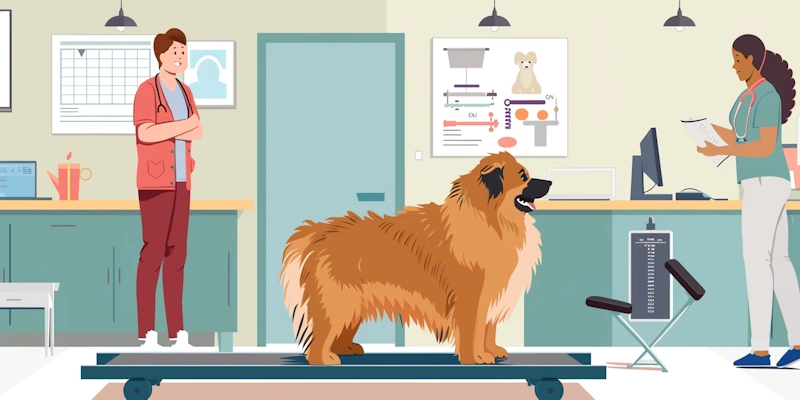Hip dysplasia is a common skeletal condition in dogs, particularly affecting larger breeds. It is characterized by the abnormal development of the hip joint, leading to joint instability and degeneration over time.
Causes

Hip dysplasia is primarily a genetic condition, but several factors can influence its development and severity:
- Genetics: Inherited from parents.
- Rapid Growth: Fast growth rates during puppyhood can contribute.
- Diet: Excessive caloric intake and improper nutrition.
- Exercise: Overexertion or inappropriate exercise, especially in puppies.
- Weight: Obesity increases the stress on joints.
Symptoms

Symptoms of hip dysplasia can vary from mild to severe and may include:
- Limping or Lameness: Especially noticeable after exercise.
- Difficulty Rising: Trouble getting up from a lying or sitting position.
- Decreased Activity: Reduced willingness to run, jump, or climb stairs.
- Pain: Sensitivity or pain around the hip area.
- Stiffness: Especially after rest or first thing in the morning.
- Abnormal Gait: Bunny-hopping or swaying when walking.
Diagnosis
Diagnosis typically involves:
- Physical Examination: To check for signs of pain, reduced range of motion, and joint instability.
- X-rays: To visualize the hip joints and assess the severity of the dysplasia.
- Joint Manipulation: To evaluate joint laxity and stability.
Treatment

Treatment options depend on the severity of the condition and can include:
- Medication: Pain relievers and anti-inflammatory drugs.
- Weight Management: Maintaining a healthy weight to reduce joint stress.
- Exercise: Controlled, low-impact exercises like swimming.
- Physical Therapy: Techniques to improve joint function and muscle strength.
- Surgery: In severe cases, surgical options such as total hip replacement or femoral head ostectomy (FHO) may be considered.
Prevention
While hip dysplasia cannot be entirely prevented, certain measures can reduce the risk and severity:
- Breeding Practices: Choosing breeding stock with healthy hips.
- Proper Nutrition: Balanced diet and avoiding overfeeding, especially during growth periods.
- Appropriate Exercise: Avoiding excessive exercise in young dogs and providing regular, moderate exercise throughout life.
- Weight Management: Keeping dogs at a healthy weight to reduce joint stress.
Prognosis
The prognosis for dogs with hip dysplasia varies. Many dogs can lead comfortable lives with proper management, while others may require surgical intervention for a better quality of life. Early detection and proactive management are key to minimizing the impact of hip dysplasia on a dog's well-being.